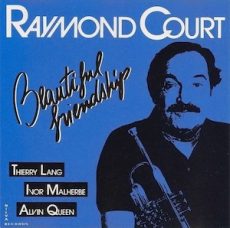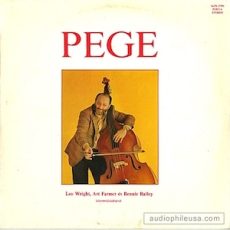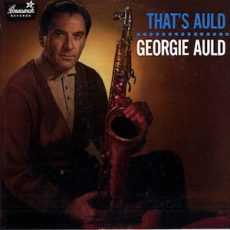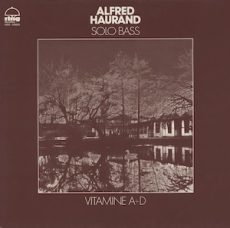
Daily Dose Of Jazz…
Raymond Court was born on December 2, 1932 in Lausanne, Switzerland. He began playing trumpet in his late teens, but by age 20 was playing in Raymond Droz’s band from 1952 to 1956.
Later in the 1950s he played with Flavio Ambrosetti and Kurt Weil, and the early 1960s saw him with Daniel Humair, Martial Solal, and Rene Urtreger.
Starting in the mid-Sixties, he began concentrating on a new career in woodworking and cabinetry, but returned to music after about a decade. He recorded as a leader in the 1980s and with Weil again and Charly Antolini in the 1990s.
Trumpeter Raymond Court died March 03, 2012.
More Posts: bandleader,history,instrumental,jazz,music,trumpet

Daily Dose Of Jazz…
Aladar Pege was born on October 8, 1939 in Budapest, Hungary into a family of Gypsy musicians. He did not start playing the bass until age 15 but he quickly grabbed the attention of his teachers at the Bartók Bela Musical Training College. He studied classical music at Bartók, and worked in dance orchestras. He attended Liszt Ferenc Academy of Music and after graduating in 1969 he remained as a double bass teacher.
Forming a jazz quartet in 1963 Pege quickly gained international recognition and in 1964 saw him being named festival Virtuoso at a concert in Prague, Czechoslovakia. Reforming his jazz group in 1970 he appeared at the Montreux Jazz Festival where he was named Europe’s Best Soloist.
Between 1975 and 1978 he lived in Berlin, Germany playing bop and free jazz, but later returned home to teach. Aladar recorded with Walter Norris, and played concerts with Herbie Hancock, Art Farmer, Dexter Gordon and Mingus Dynasty. Sue Mingus, the widow of Charles Mingus, gave him one of her late husband’s instruments.
Double bassist Aladar Pege, who was called the Paganini of the bass, died at age 67 on September 23, 2006 in Budapest.
More Posts: bandleader,bass,history,instrumental,jazz,music

Daily Dose Of Jazz…
Karl Kiffe, born July 6, 1925 in Los Angeles, California first attracted attention as winner of the annual Gene Krupa Contest in 1943. Succeeding Chuck Falkner as leader of the Hollywood Canteen Kids he was featured in novelty numbers in several feature films before working as a single in Ken Murray’s Blackouts.
1945 saaw him hired by Jimmy Dorsey, with whom he worked for about a year, and then again from 1950 through 1953. Over the next decade, Kiffe worked with Stan Getz, Zoot Sims, Charlie Shavers, Red Norvo and Woody Herman, as well as singers Andy Williams, June Christy, and Ella Fitzgerald.
Speaking in 1946, when asked which drummer he most admired, Kiffe cited the solos of Buddy Rich, while praising the big band work of Don Lamond and Jo Jones.
Drummer Karl Kiffe, who was great friends with saxophonist Warne Marsh, died on May 10, 2004 at the age of 76 in Las Vegas, Nevada
More Posts: drums,history,instrumental,jazz,music

Daily Dose Of Jazz…
Juhani Aaltonen was born December 12, 1935 in Kouvola, Finland. He began playing professionally at the end of the Fifties. He played in a sextet led by Heikki Rosendahl during that time, and then studied flute performance at the Sibelius Academy and in the U.S. at the Berklee College of Music.
Moving back to Finland, he settled in Helsinki and began working both as a session musician and with fusion groups. Late in the 1960s he formed a duo with Edward Vesala, played in the group Eero Koivistoinen and with Tasavallan Presidentti. He recorded with Thad Jones and Mel Lewis and with Heikki Sarmanto late in the decade and early 1970s. His debut album as a soloist, Etiquette, was released in 1974.
The following year Juhani became a member of the New Music Orchestra, and worked with the Nordic All Stars, Arild Andersen, and Peter Brötzmann before the end of the decade. The Eighties saw him working with the UFO Big Band, Jan Garbarek, Charlie Mariano, and others. He led a touring quartet from 1990 to 1992.
In 2001 he released a duo recording, Rise, and his trio album Mother Tongue won a Jazz-Emma in Finland. Saxophonist and flautist Juhani Aaltonen continues to perform as well as teach at the annual Nilsiä Music Camp.
More Posts: bandleader,flute,history,instrumental,jazz,music,saxophone

Daily Dose Of Jazz…
Ali Haurand was born Alfred Josef Antonius Haurand on November 15, 1943 in Viersen, Germany. After an apprenticeship as a confectioner and a business manager, he studied from 1966 to 1973 at the Folkwang School and the Rhineland Music Academy. He initially played with his own trio and from 1967 in the trio and quintet of pianist George Maycock. In 1968 he also toured with Philly Joe Jones, Jacques Pelzer, René Thomas and Jan Huydts.
He performed with Ben Webster, Don Byas, John Handy, Bobby Jones and Wilton Gaynair. This was followed by his own groups, Third Eye, the European Jazz Quintet with Leszek Zadlo, Gerd Dudek, Alan Skidmore and Pierre Courbois. Together with Alan Skidmore and Tony Oxley, they formed the trio SOH. Haurand played with his long-time companions, the saxophonist Gerd Dudek and the pianist Rob van den Broeck, in the formation The Trio.
Since 1982, the European Jazz Ensemble, which he formed out of the European Jazz Quintet with varying lineups that included Allan Botschinsky, Stan Sulzmann, Joachim Kühn and Daniel Humair. In the 2000s, he took part in several jazz and poetry projects.
For decades he was a presenter and consultant to the WDR television jazz editorial team, and for twelve years he was artistic director of the Düsseldorf Jazz Rally. From 1987 he was the founder, director and organizer of the Viersen Jazz Festival until 2014. For over 20 years he organized the jazz concerts in the Süchtelner Weberhaus.
Double bassist and bandleader Ali Haurand, who was also a television presenter, music producer and festival manager, died on May 28, 2018.
More Posts: bandleader,bass,history,instrumental,jazz,music





